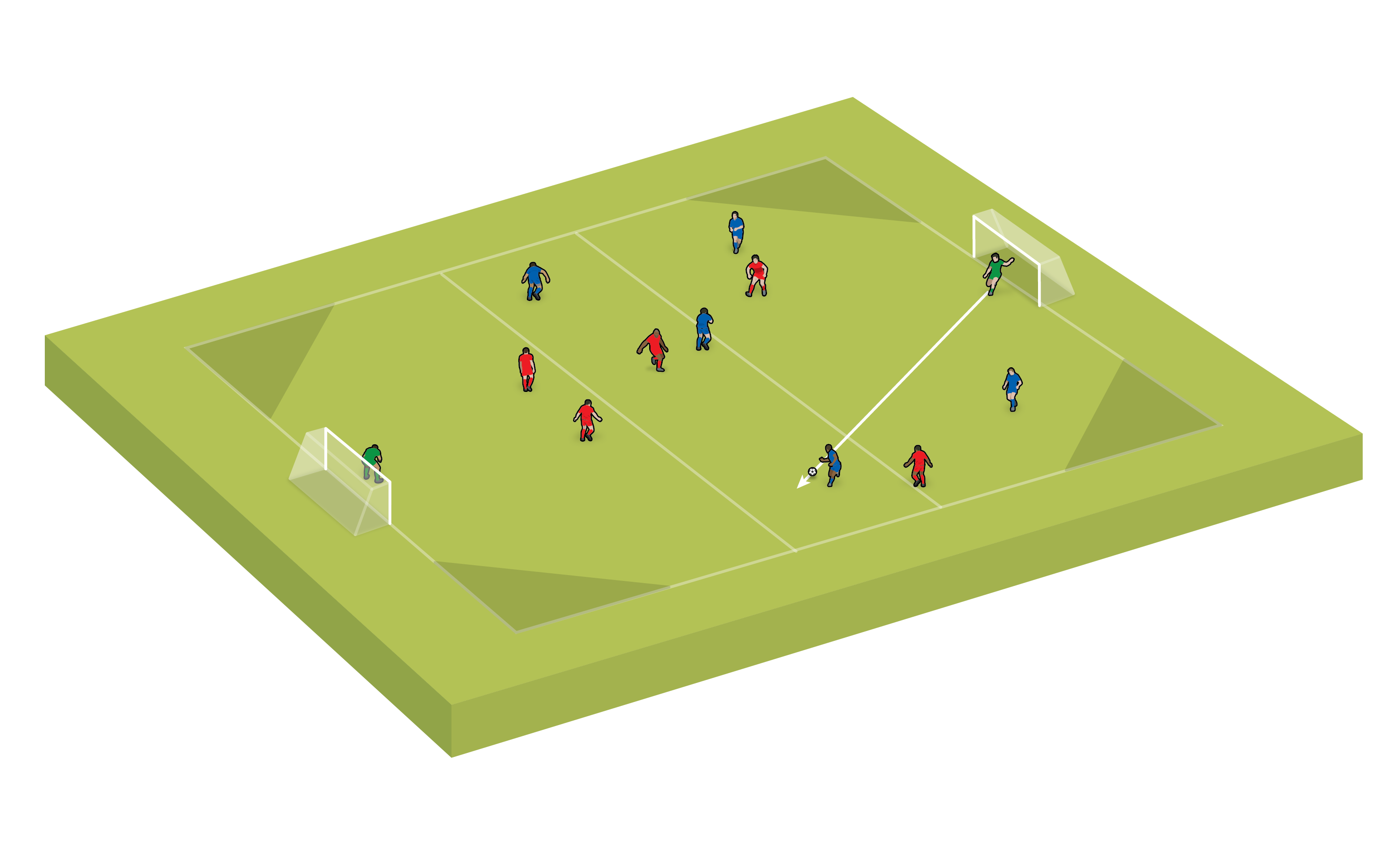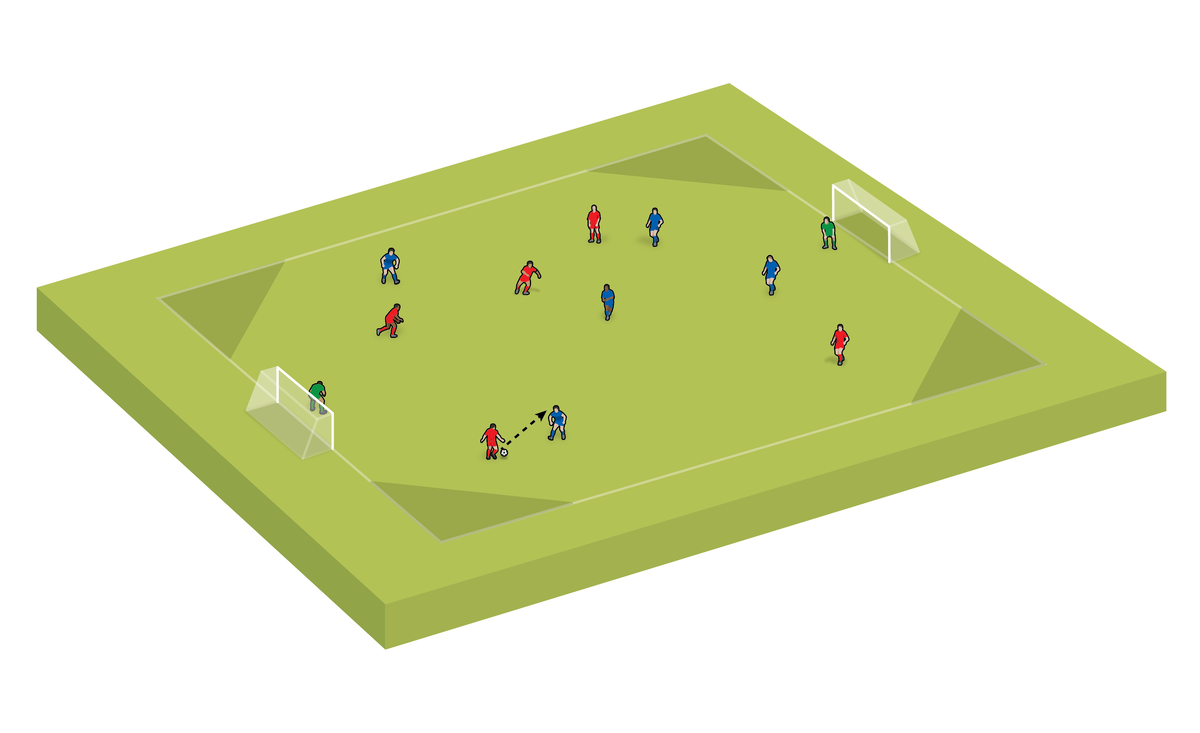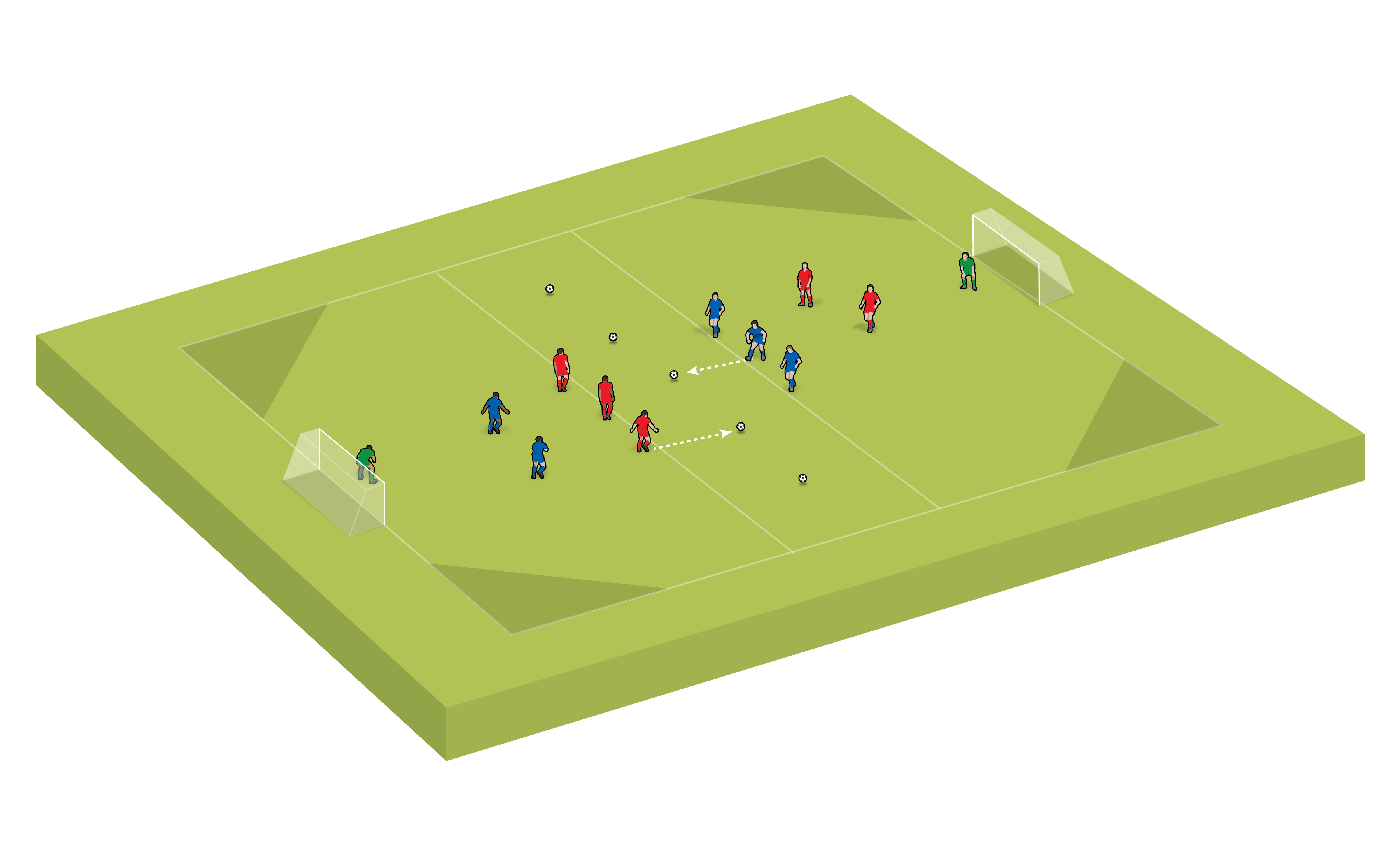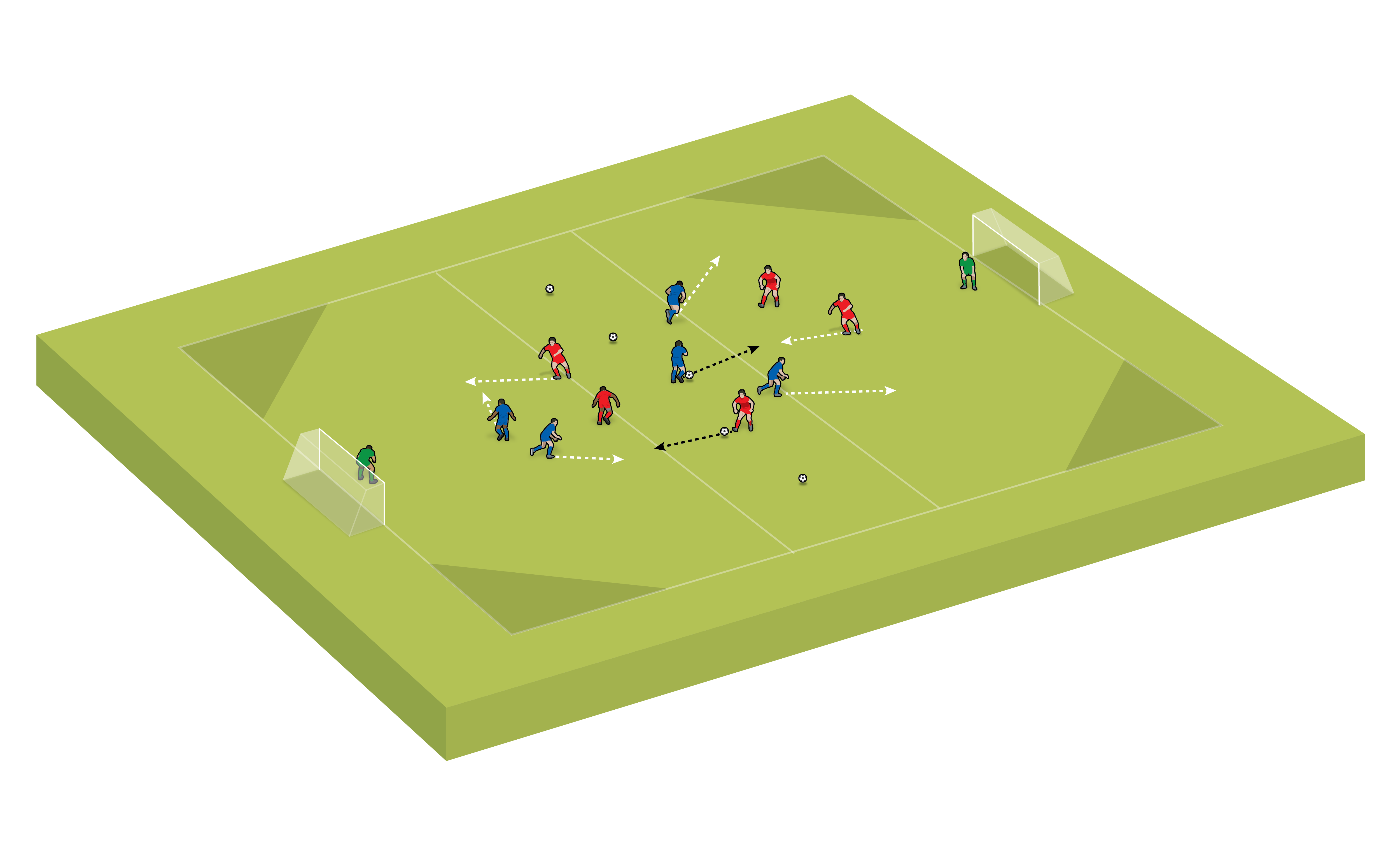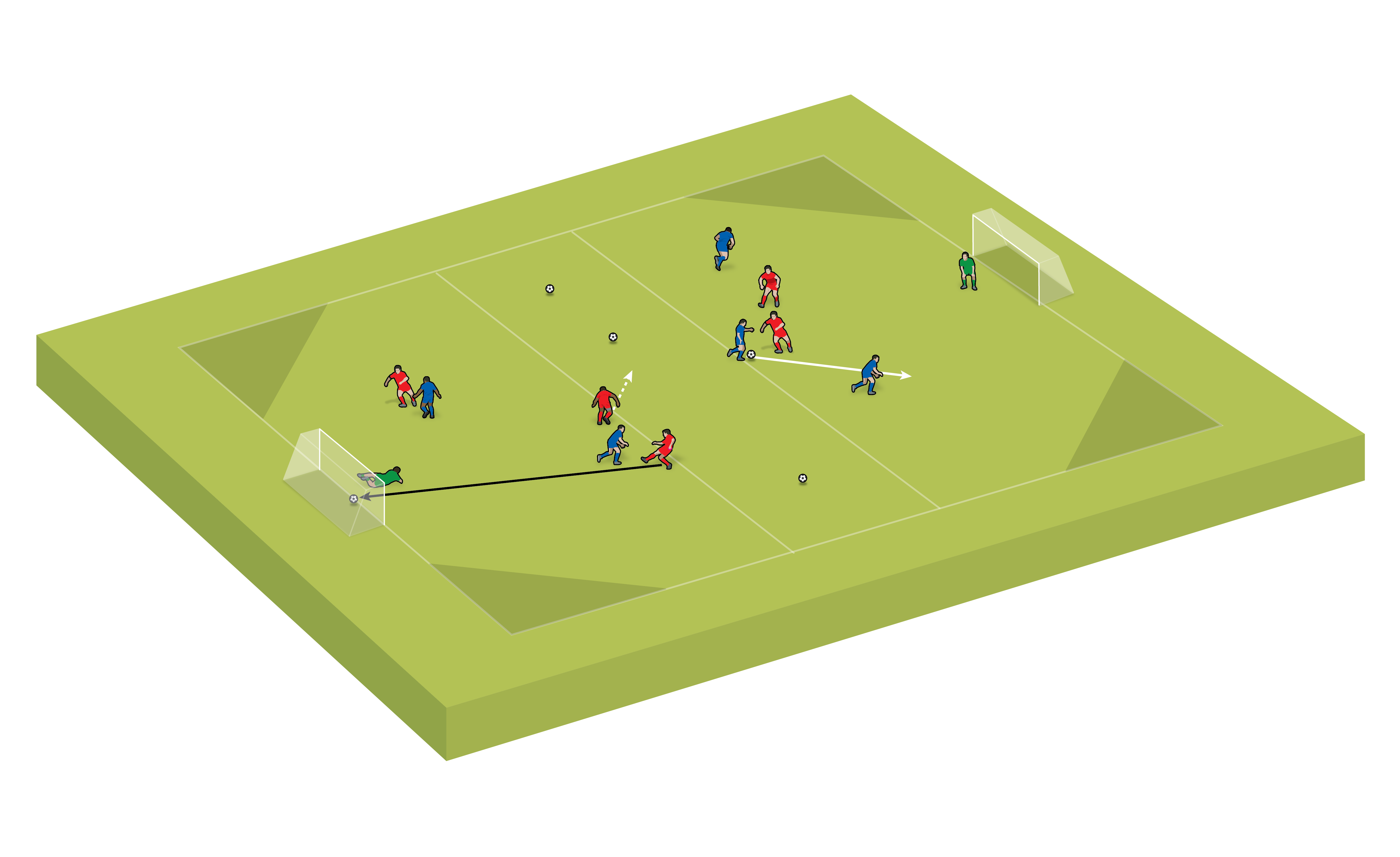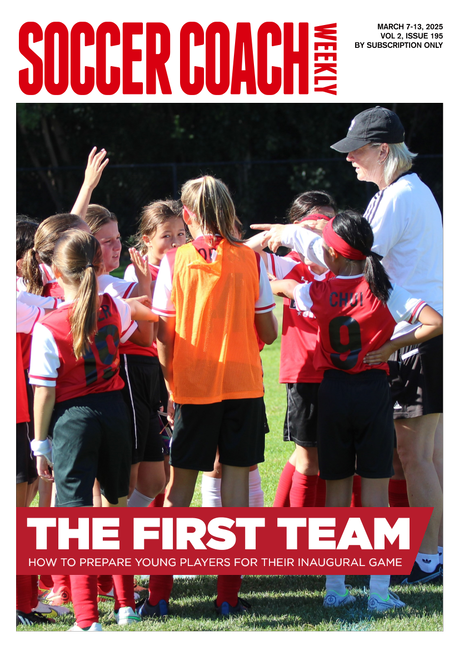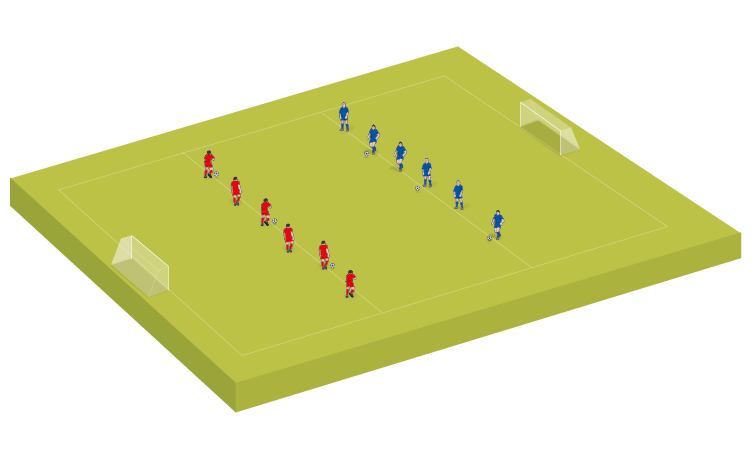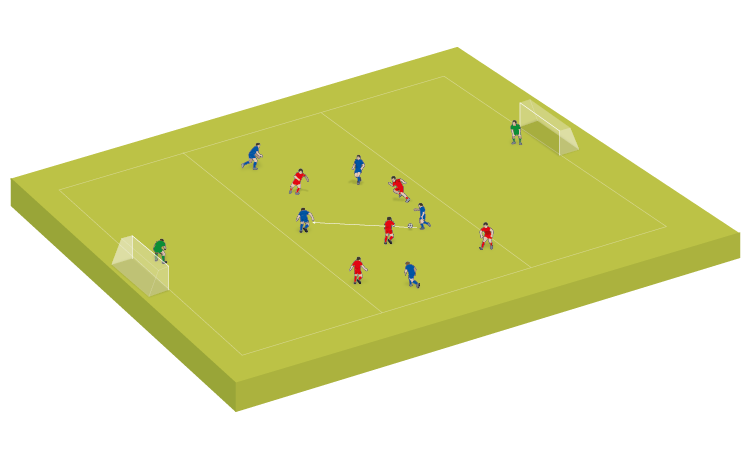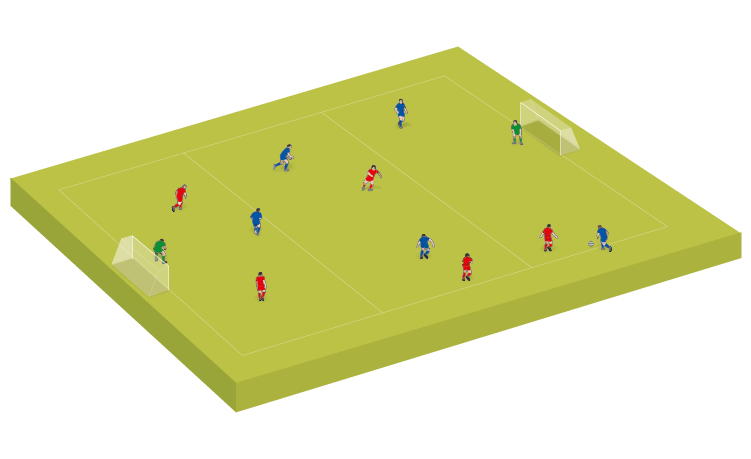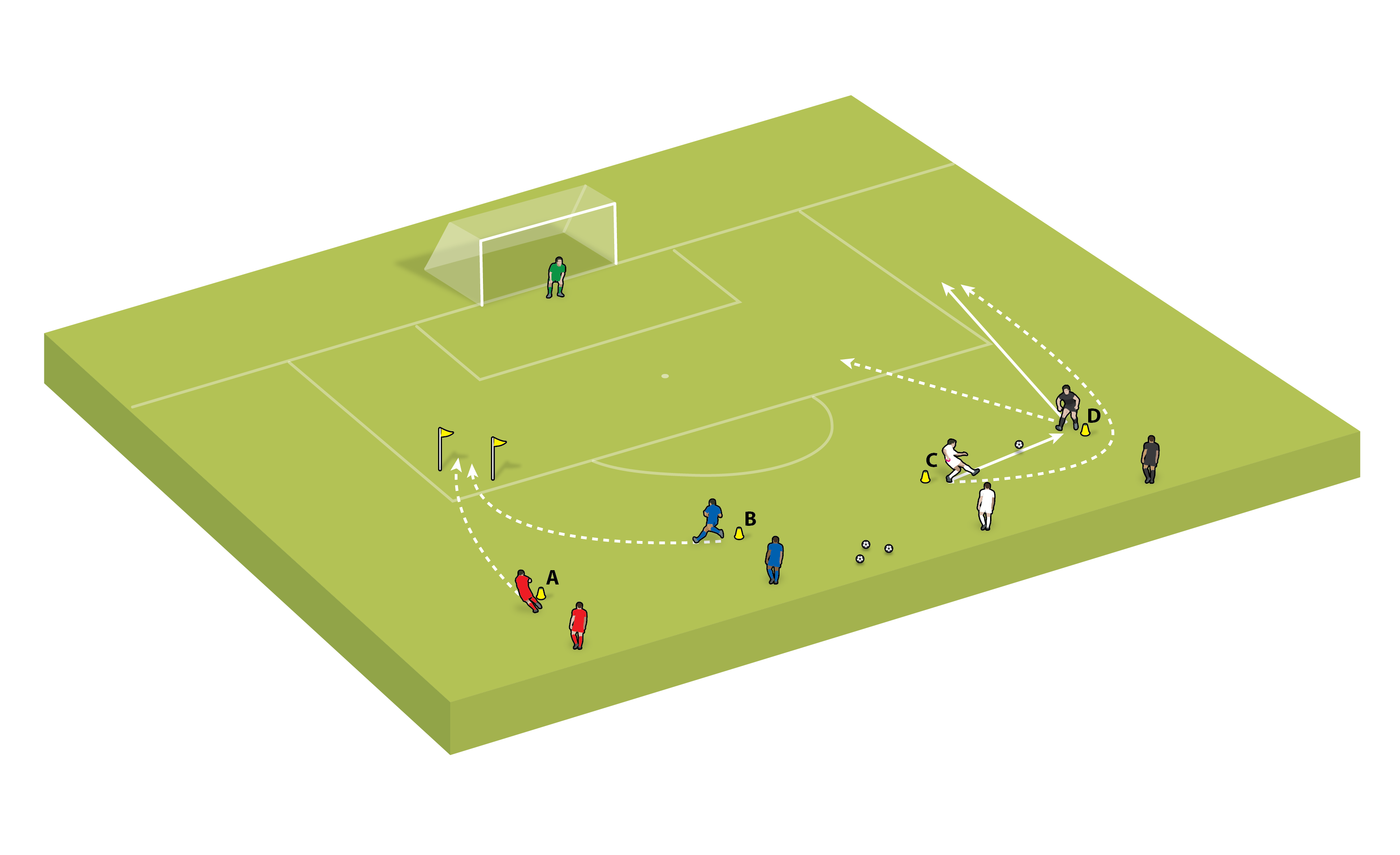Practice 2: Long-range finishing
Encourage your players to get shots away from distance more often.
WHY USE IT
This practice gives the players lots of repetition of long-range finishing.
SET UP
Split a small pitch into thirds. The middle third is smaller than the two end thirds and the corners are removed so that it becomes an octagon in shape. An odd number of balls are lined up in the middle third. Split the players into two teams, then divide them between the two end thirds. In this example, there are three attacking players in each end third, alongside two opposition defenders.
HOW TO PLAY
A player from each attacking team collects a ball from the centre and their team aims to score. As soon as a team scores, or the ball goes out of play, the attacking team collects another ball. If the defenders win the ball, they must dribble it out. The practice continues until all the balls have been taken from the middle third. The team with the most points wins.
COACHING POINTS
-
Just before you receive the ball, scan to see if you are in a position to have an attempt on goal.
-
If you can’t shoot first time, make sure your first touch allows your second touch to be a shot.
-
Select your shot type and perform the technique correctly.
-
If you can’t shoot, can you get the ball to a team-mate who can?
Related Files
Coaches Testimonials

Gerald Kearney, Downtown Las Vegas Soccer Club

Paul Butler, Florida, USA

Rick Shields, Springboro, USA

Tony Green, Pierrefonds Titans, Quebec, Canada
Soccer Drills
Discover the simple way to become a more effective, more successful soccer coach
In a recent survey 89% of subscribers said Soccer Coach Weekly makes them more confident, 91% said Soccer Coach Weekly makes them a more effective coach and 93% said Soccer Coach Weekly makes them more inspired.
*includes 3 coaching manuals
Get Weekly Inspiration
All the latest techniques and approaches
Soccer Coach Weekly offers proven and easy to use soccer drills, coaching sessions, practice plans, small-sided games, warm-ups, training tips and advice.
We've been at the cutting edge of soccer coaching since we launched in 2007, creating resources for the grassroots youth coach, following best practice from around the world and insights from the professional game.
